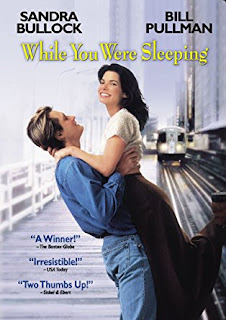Truth is, resolutions are challenging but that doesn't stop us. Year after year we resolve and fail. Resolve and fail. I love resolutions myself. For one day we are allowed, nay encouraged, to dream big. We are shown a blank calendar, 365 days of promise, and are told to make something of it. That something can be anything, anything our little hearts can dream up. The prospect is both thrilling and disheartening at the same time.
It's times like these that I think of Anne Shirley's famous quote, "Tomorrow is a new day with no mistakes in it." How encouraging, yes? Each day, each year we can make our lives what we want of them. But any true Anne fan will remember the reply Anne received from her school teacher, Muriel Stacy who says, "Ah, no mistakes in it yet."
Was Miss Stacy merely attempting to burst Anne's bubble, to bring her down and make her more sensible and realistic (ie: boring)? In my opinion, no, she wasn't. It's easy to dream big. We can't help ourselves, but often times in dreaming so large we create an almost impossible feat. We set ourselves up for failure by not recognizing the realities of the task and the limitations of our own abilities. Resolutions can be achieved but only if we approach them like we do any other goals in our lives. We need a plan of actionable steps.
Action plans are the blueprint for success. We start with a mission statement, a goal that is measurable and by measurable I mean, is it something with a tangible finish line. Resolving to lose weight is far too vague, whereas resolving to lose 20 pounds is far more measurable. When thinking of your resolutions think of how you will know you have reached success? What will be your signal to yourself that you accomplished what you set out to do? My mission statement for 2018 is a big one, bigger than anything I have ever done before.
I am going to finish writing 3 books before December 31, 2018.
Holy crap, that's huge. I can feel my heart bouncing even as I wrote that, but let's step back a notch. Is this a goal I can reasonably achieve? Well, given that each of my first drafts run approximately 60,000 words, to reach my goal I will need to have written over 180,000 words. If I divide 180,000 by 365 days I get 493 words. That tells me I will need to write a minimum 493 words a day. That's not too bad. Even on my worst days of writing I average 1000 words a day, sometimes I can achieve as many as 3,000 words a day. Given that I am already 18,000 words into the first project (Thanks NaNoWriMo!), I think it's fair to say my goal is achievable.
The next step when planning out your resolution is to break it down further into smaller chunks. How do you eat an elephant? (Forget the why, OK? Assume you have no choice.) The answer is simple, one bite at a time. I want to take that 180,000 words and break it down by project. I want a measurable goal for each book. A finish line. An end date. A champagne and chocolate kind of day.
For my resolution, I have set one deadline for end of February 2018. The next is set for June 2018 and the last is set for sometime in November. This gives me a nice 4 week buffer in case of any mishaps. Yay!
So now, instead of trying to keep on track for an entire year, all I need to do is make sure I am on track for each project. Three to four months is a far more immediate time frame than 12. But I never stop there. Each week on my planner I have written down goals. Sometimes it's words written, other times is revision progression but the end game is always the same. I have an action plan to follow. I have measurable goals to gauge my progress. I have the means to get me where I want to go.
That's not to say I won't have hiccups. I will. I've made allowances for that so hopefully I can make up time if I fall behind and not get too far off track. Once I took my 2018 goal and broke it down into project goals and then monthly or weekly goals my resolution became far more achievable. The real resolution becomes following the blueprint I've laid out.
In the end, this means a lot of new material coming from me over the next year, new stories, new challenges, new murders. I'll try to keep you up to date but, as you can see, I'm already planning on being very, very busy.
Happy New Year, Dear Readers! All the best for a happy, healthy, prosperous 2018!




















